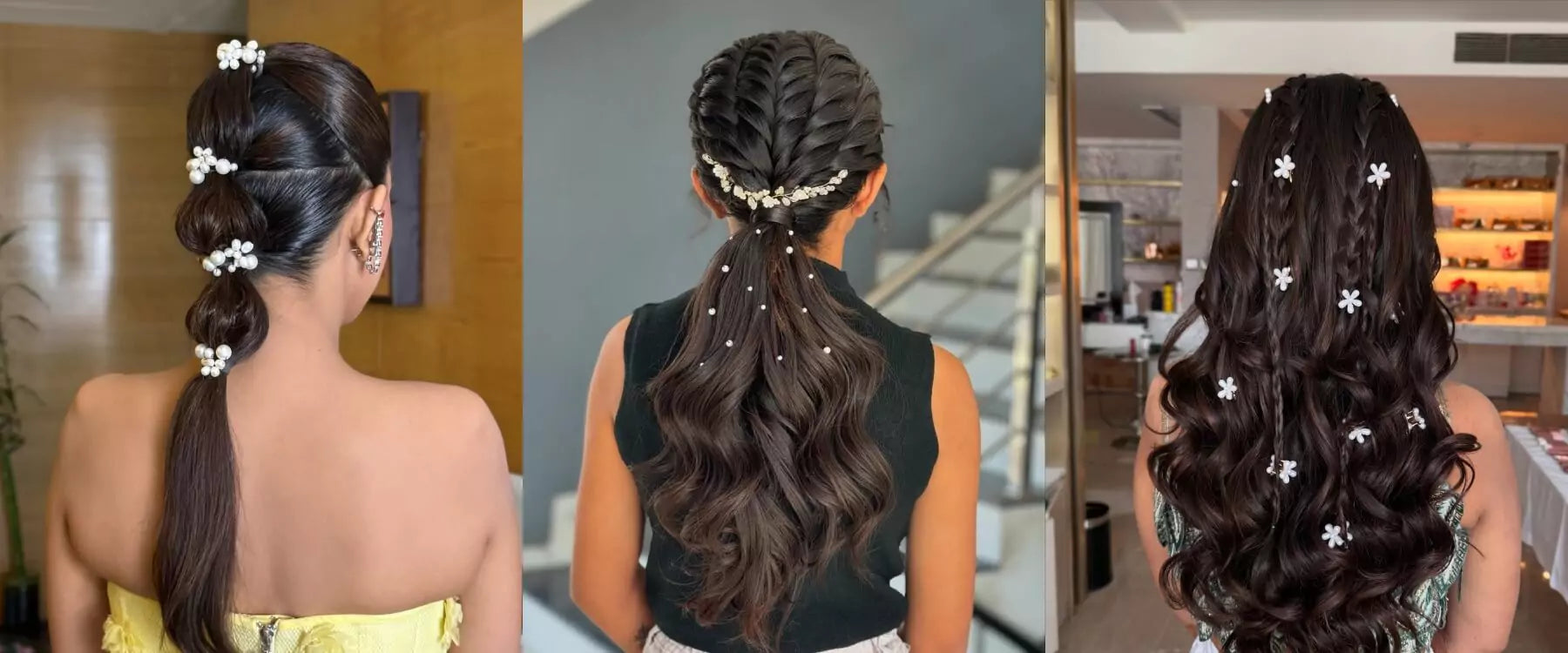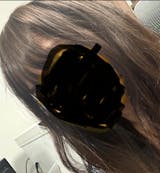Wigs have become a popular choice for expressing style, protecting natural hair, or dealing with medical hair loss. They come in a variety of colors, styles, and materials, offering high versatility. But what exactly happens at night when you’re exhausted and just want to crawl into bed? Can you skip removing your wig and sleep soundly with it on?
This page delves into the world of wigs, exploring both the pros and cons of sleeping with a wig on. We'll also offer tips on how to care for wigs and keep them in their best condition, even if you choose sleeping with the wig on.
All About Wigs
Let’s learn all about wigs and wig care. Wigs are hairpieces that fully cover the head or part of the head. There are two main types of wigs on the market: human hair wigs and synthetic hair wigs.
Types of wigs
- Human Hair Wigs
- Synthetic Hair Wigs
Human Hair Wigs
Human hair wigs, as the name suggests, are made from real human hair, providing a natural look and feel. However, these natural looks come at a higher price, as they are more durable, seamless, and expensive than other types of wigs.
Synthetic Hair Wigs
Made from artificial fibers, these wigs mimic the look and feel of human hair wigs. They are simple and easy to care for but do not look or feel as real and natural as human hair wigs.
Why Wear a Wig?

Wearing a wig offers several benefits! Let's dive into them:
1. Expressing Personal Style
Wigs allow you to transform your look instantly. You can experiment with different textures, colors, and lengths to find the style that complements your facial features and personality. Whether you like sleek bobs, beachy waves, or vibrant mermaid hair, there are countless options available.
2. Protecting Natural Hair
Wigs can protect your natural hair from heat-styling tools, harsh chemicals, and environmental factors like sunlight and chlorine. They are particularly beneficial if you are growing your hair out or recovering from damage, providing the protection you need to achieve your hair goals.
3. Hair Thinning/Balding
Wearing a wig can be a transformative solution for those experiencing hair thinning or balding. It offers an instant boost in volume and coverage, helping you feel more confident and secure in your appearance. Wigs provide a natural-looking solution that seamlessly blends with your existing hair. Whether you choose a human hair wig for a realistic touch or a synthetic one for ease of maintenance, you can enjoy a full, stylish look every day.
4. Medical Hair Loss
Wigs provide a stylish and comfortable solution for those who are experiencing hair loss due to medical reasons or other treatments like chemotherapy or radiation treatment. They can help restore confidence and provide a sense of normalcy during difficult times.
Also Read: What Kind of Wig Is Most Suitable for Chemotherapy Patients?
Sleeping in a Wig: Pros and Cons
While the convenience of sleeping with your wig on can be tempting, it's important to understand the potential downsides:
Cons of Sleeping in a Wig
- Scalp Health Issues: Wigs can restrict airflow to the scalp, leading to irritation, dryness, and bacterial growth. Sweat buildup can aggravate these problems.
- Wig Damage: Friction from tossing and turning during sleep can cause tangles, matting, and general wear and tear on the wig fibers.
- Impact on Natural Hair: Wearing a wig at night that has limited breathability makes your natural hair dry and frizzy.
Pros of Sleeping in a Wig
- Maintaining Hairstyle: Sleeping with a wig on can help preserve your hairstyle for the next day.
- Privacy: Wigs offer privacy for those experiencing hair loss or who prefer not to show their natural hair at night while traveling.
Also Read: Wearing Wigs? Rock Them Every Day with Confidence
Dermatologist Recommendations
Dermatologists point out the importance of allowing your scalp to breathe at night. Sleeping with a wig on can trap moisture and heat, creating a breeding ground for bacteria and potentially leading to scalp issues. Dermatologists recommend developing a good wig routine by prioritizing scalp and wig health.
Tips for Overnight Wig Care
Let's discuss some tips on how to care for wigs while minimizing risks and extending the wig's lifespan. If you occasionally sleep with a wig on, follow these tips to lower risks and keep your wig in top condition.
Choose the Right Wig
Opt for wigs made of breathable materials like lightweight base fabric and human hair wigs for increased durability and comfort.
Secure the Wig Properly
A loose wig can tangle more easily. Thus, ensure it's snug yet comfortable before bed.
Satin or Silk Pillowcase
Use a satin or silk pillowcase to reduce friction, and prevent frizz and tangling.
Wig Hygiene
Keep your wig clean by washing it regularly according to the brand's instructions. This helps remove sweat and bacteria that can pile up over time.
Wig Stylists Recommendations
Treat your wig with care! Regular brushing, detangling, and proper storage will extend its lifespan.
Alternatives of Sleeping with a Wig on
If you are concerned about the drawbacks of sleeping in a wig, consider these excellent alternatives:
Nightcaps or Scarves
Nightcaps or scarves are soft, comfortable, and available in various styles and fabrics. They protect your wig from friction and keep your hairstyle in place while you sleep. Look for nightcaps or scarves made from breathable fabrics like satin or silk to prevent tangling and frizz.
Protective Hairstyles
Twists, buns, or braids may not be that good-looking but are great for sleeping. These styles help confine your hair and reduce tangles. Opt for loose braids or twists to avoid putting tension on your wig or natural hair. You can also try "pineapple bun" a hairstyle where you loosely gather your hair at the top of your head and secure it with a hair clip or tie. This keeps your hair off your shoulders and reduces friction during the night.
Conclusion
While sleeping with a wig on is not ideal, it can be done occasionally with proper precautions and care. By following the tips above and considering different hairstyles, protective scarves & nightcaps, you can keep your scalp healthy and maintain your wig's quality even while sleeping in a wig. Just remember to prioritize your comfort. With a little planning and the right approach, you can enjoy the versatility of wigs without compromising your well-being.
Ultimately, the decision to sleep with a wig on or off is personal. Listen to your body and choose the option that gives you the best night's sleep.
Things to Consider:
Sleeping With a Wig on Occasionally
If you occasionally sleep in your wig, the risks are minimal if you care for the wig properly. If you do so regularly, prioritize your scalp health, and follow these measures for sleeping in a wig to keep your wig in good condition.
Travel
Wigs can be great for traveling. If you sleep in your wig while traveling, take a wig brush and deep conditioner to refresh and nourish it frequently.
Give Yourself a Break
Even after following the best methods, if you still feel they are ineffective or sleeping in a wig is still challenging, give yourself a break and avoid sleeping in wigs whenever possible.
We understand wigs are fantastic, but sleeping in them can cause frizz, tangling, and other issues. If you must sleep in a wig, apply these tips to keep your wig looking as good as new for a long time.














